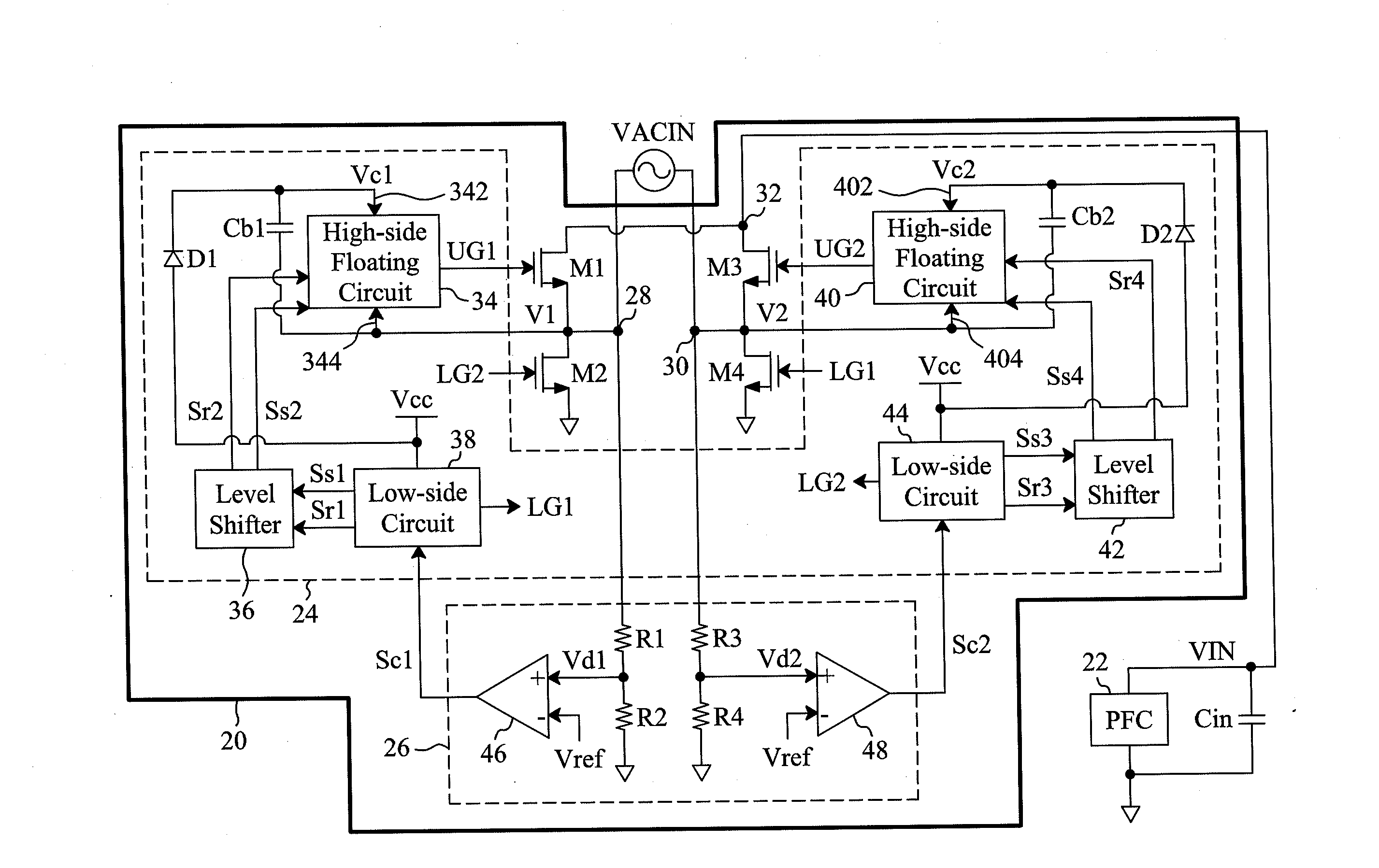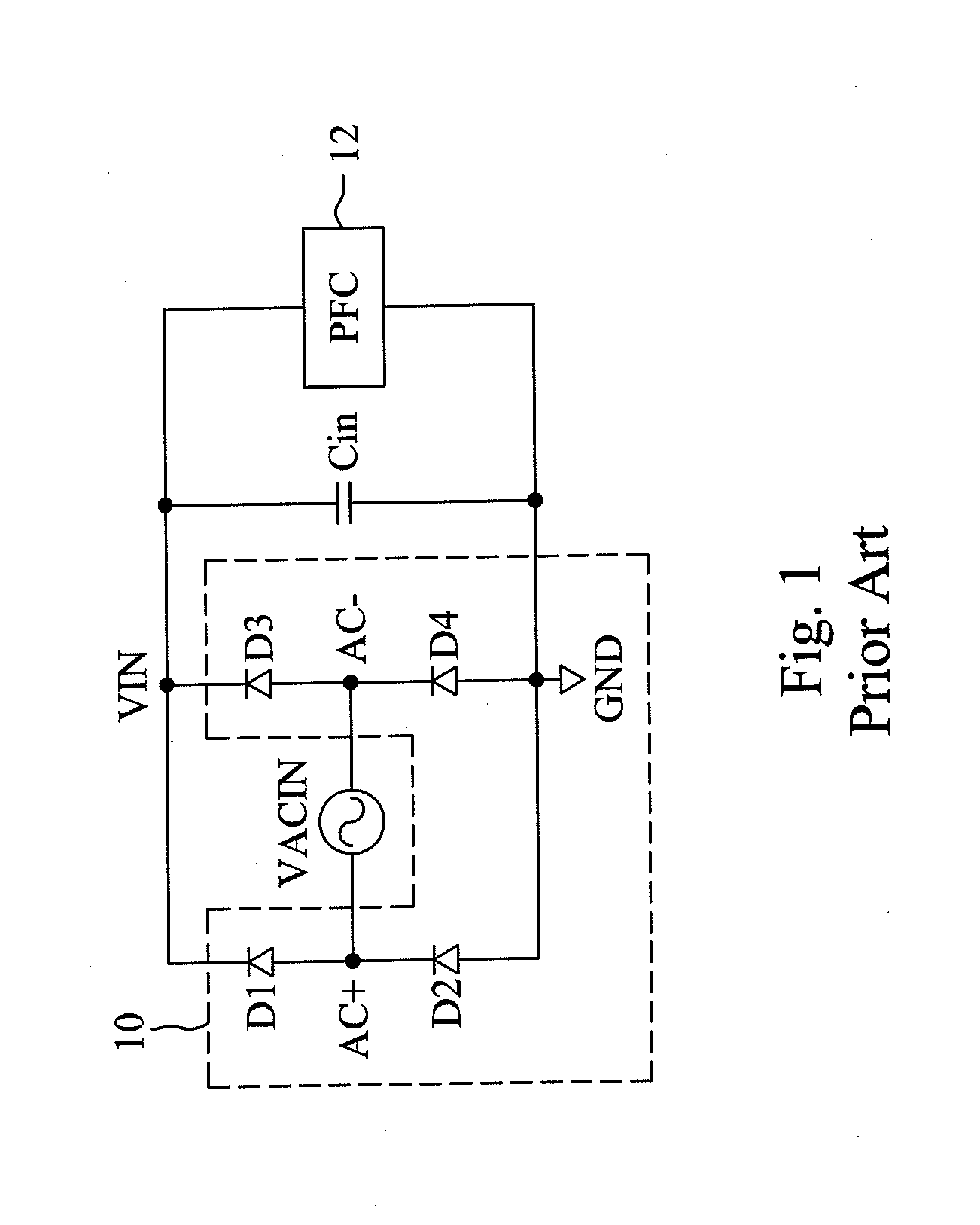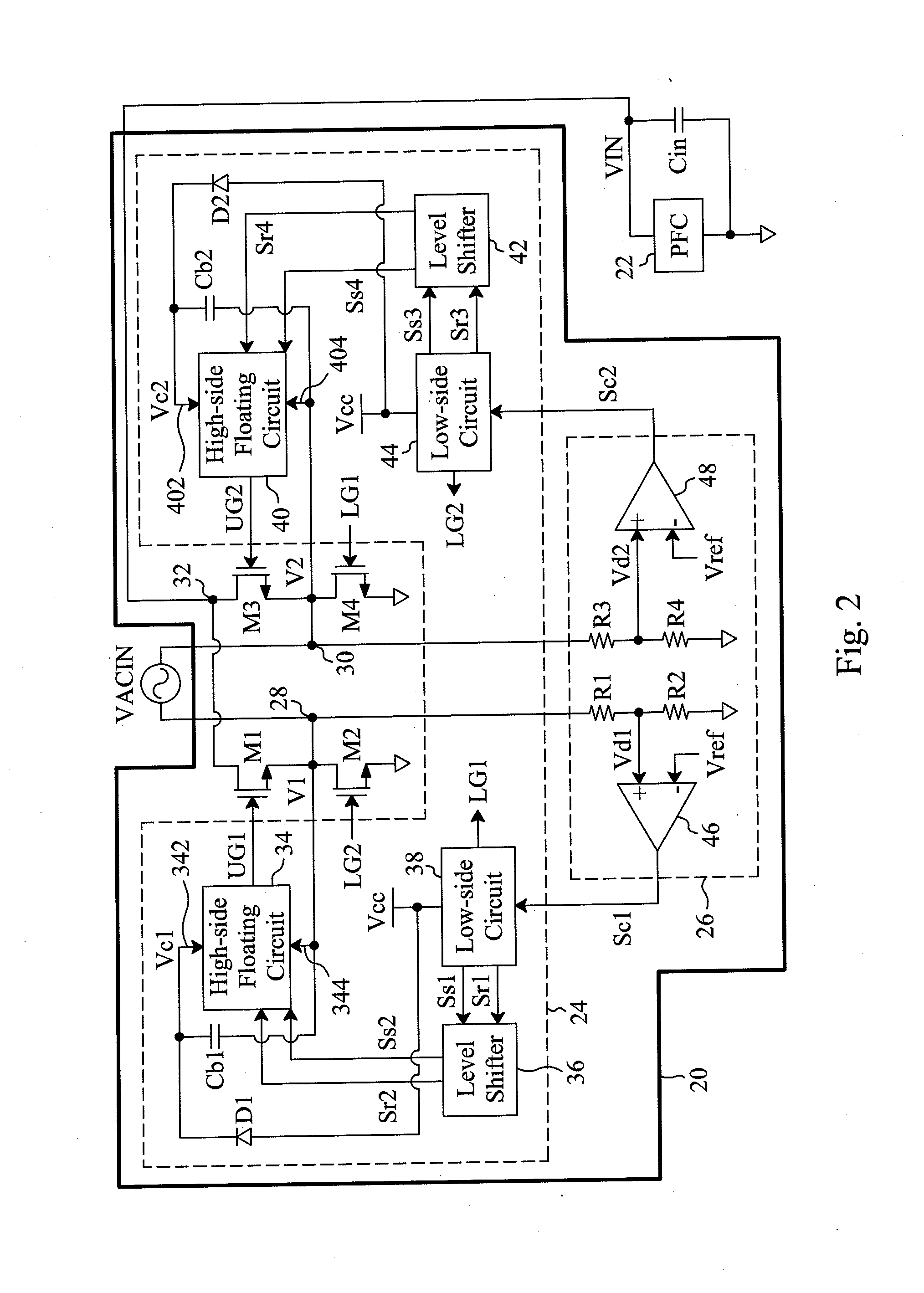Mosfet bridge rectifier
a rectifier and mosfet technology, applied in the direction of dc conversion, dc conversion efficiency, conversion with intermediate conversion, etc., can solve the problems of system low efficiency and higher cost, and achieve the effect of improving efficiency and controlling accurately
- Summary
- Abstract
- Description
- Claims
- Application Information
AI Technical Summary
Benefits of technology
Problems solved by technology
Method used
Image
Examples
second embodiment
[0024]FIG. 5 is a second embodiment for the voltage detector 26 shown in FIG. 2, which identifies the voltages at the AC input terminals 28 and 30 by detecting the currents I1 and I3 of the NMOSFETs M1 and M3 to determine the detection signals Sc1 and Sc2, respectively. In this embodiment, the voltage detector 26 includes current sensors 60 and 62, comparators 46 and 48, and current sources 64 and 66. The current sensors 60 and 62 sense the currents I1 and I3 of the NMOSFETs M1 and M3 to generate current sense signals I2 and I4, respectively, and each of the current sources 64 and 66 provides a constant current Iref. When the voltage V1 of the AC input terminal 28 increases, a body diode Db1 of the NMOSFET M1 is on and thus a current I1 flows to the DC output terminal 32 from the AC input terminal 28 through the body diode Db1. The current I1 and the current sense signal I2 increase with an increase of the voltage V1. When the current sense signal I2 becomes greater than the current...
third embodiment
[0025]FIG. 6 is a third embodiment for the voltage detector 26 shown in FIG. 2, in which the roles of the resistors R1 and R3 shown in FIG. 2 are replaced by gate-grounded depletion-type NMOSFETs M7 and M8. When the voltages V1 and V2 are zero, the depletion-type NMOSFETs M7 and M8 are on. When the voltage V1 of the AC input terminal 28 increases, the source voltage Vd1 of the depletion-type NMOSFET M7 increases accordingly. When the voltage Vd1 reaches the threshold voltage of the depletion-type NMOSFET M7, the depletion-type NMOSFET M7 is turned off, thereby limiting the maximum value of the voltage Vd1, to prevent a high voltage from applying the voltage detector 26. When the voltage Vd1 is greater than the reference voltage Vref, the comparator 46 asserts the detection signal Sc1. Likewise, when the voltage V2 of the AC input terminal 30 increases, the voltage Vd2 increases accordingly. When the voltage Vd2 reaches the threshold voltage of the depletion-type NMOSFET M8, the depl...
PUM
 Login to View More
Login to View More Abstract
Description
Claims
Application Information
 Login to View More
Login to View More - R&D
- Intellectual Property
- Life Sciences
- Materials
- Tech Scout
- Unparalleled Data Quality
- Higher Quality Content
- 60% Fewer Hallucinations
Browse by: Latest US Patents, China's latest patents, Technical Efficacy Thesaurus, Application Domain, Technology Topic, Popular Technical Reports.
© 2025 PatSnap. All rights reserved.Legal|Privacy policy|Modern Slavery Act Transparency Statement|Sitemap|About US| Contact US: help@patsnap.com



